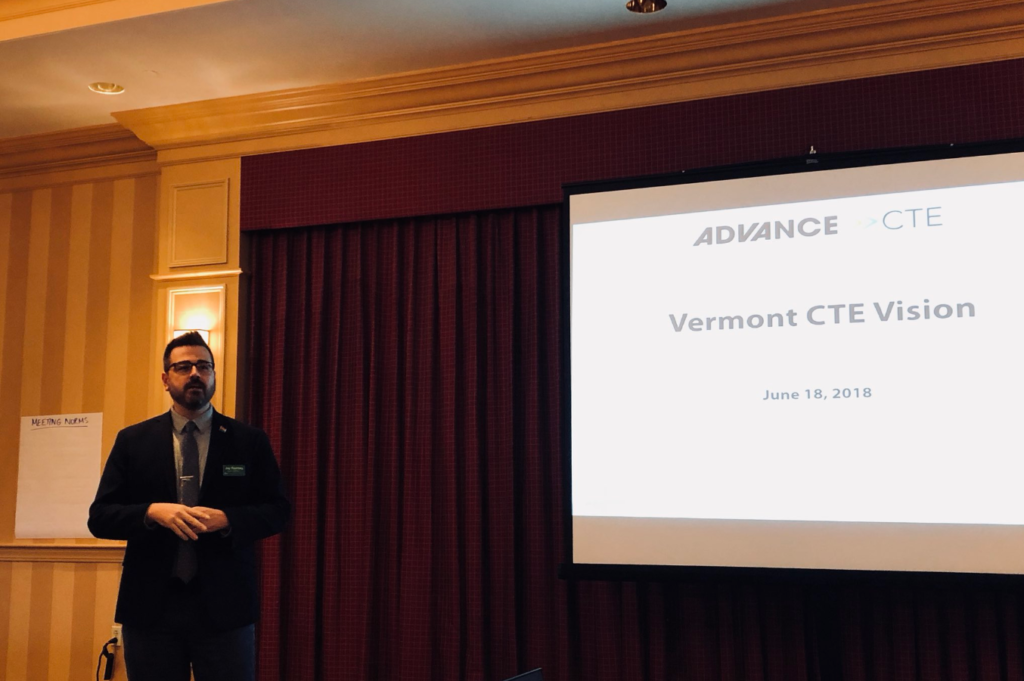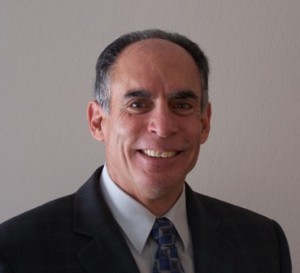Much of my day-to-day work at Advance CTE involves examining national trends in CTE topics, looking at several states at once, so it is always exciting when I get the opportunity to dive deeper into one state’s system. Recently, I was able to do that as part of Vermont CTE’s strategic planning process, launched by Vermont’s State CTE Director, Jay Ramsey.
Vermont CTE is partnering with Advance CTE to plan and facilitate a strategic planning process that pushes CTE forward in the state and incorporates feedback from a large number of stakeholders. The work began in February 2018, as we held several conversations with Ramsey and his office about their goals for this work and for the CTE system. In March, Vermont released a statewide survey, which received almost 1500 responses from a variety of stakeholders, including current and former students, families, employers, teachers from both CTE and non-CTE classrooms, as well as representatives from postsecondary. I also conducted ten phone interviews with key stakeholders across the Vermont education and workforce development system. Both the survey and phone interviews asked respondents a variety of questions about their perceptions of the Vermont CTE system, including quality, rigor and accessibility. This data provided valuable insights into how the system serves learners, and I particularly enjoyed interviewing two current CTE students, both of whom were excited about their program and easily able to describe what their potential future careers looked like.
 All of this engagement culminated in a day-long interactive strategic planning workshop in Burlington, Vermont on June 18. Advance CTE’s Deputy Executive Director, Kate Kreamer, and I led and facilitated the workshop, which included not just state CTE staff, but around 30 representatives from a range of stakeholder groups, including local CTE programs, postsecondary institutions, state legislators, industry partners and workforce development. During the workshop, stakeholders examined the data on perceptions of CTE in Vermont and drafted a series of goals and strategies designed to help learners succeed within the state of Vermont. We guided them through a series of exercises to help them understand the needs of learners as well as the needs of other stakeholders and pushed them to work with each other and take ownership over these goals and their role in helping Vermont achieve them.
All of this engagement culminated in a day-long interactive strategic planning workshop in Burlington, Vermont on June 18. Advance CTE’s Deputy Executive Director, Kate Kreamer, and I led and facilitated the workshop, which included not just state CTE staff, but around 30 representatives from a range of stakeholder groups, including local CTE programs, postsecondary institutions, state legislators, industry partners and workforce development. During the workshop, stakeholders examined the data on perceptions of CTE in Vermont and drafted a series of goals and strategies designed to help learners succeed within the state of Vermont. We guided them through a series of exercises to help them understand the needs of learners as well as the needs of other stakeholders and pushed them to work with each other and take ownership over these goals and their role in helping Vermont achieve them.
Going forward, Ramsey will work, with assistance from Advance CTE, to refine the vision and goals, gathering input from more stakeholders, including Vermont students. He plans to present the state’s new strategic vision for CTE to the State Board of Education later this Fall. We are excited to continue this work and follow the developments from Vermont.
Ashleigh McFadden, State Policy Manager






 Is this a word you associate your work? How many students do you think characterize their experiences in the classroom as joyful? Yesterday, I had the great fortune of hearing
Is this a word you associate your work? How many students do you think characterize their experiences in the classroom as joyful? Yesterday, I had the great fortune of hearing